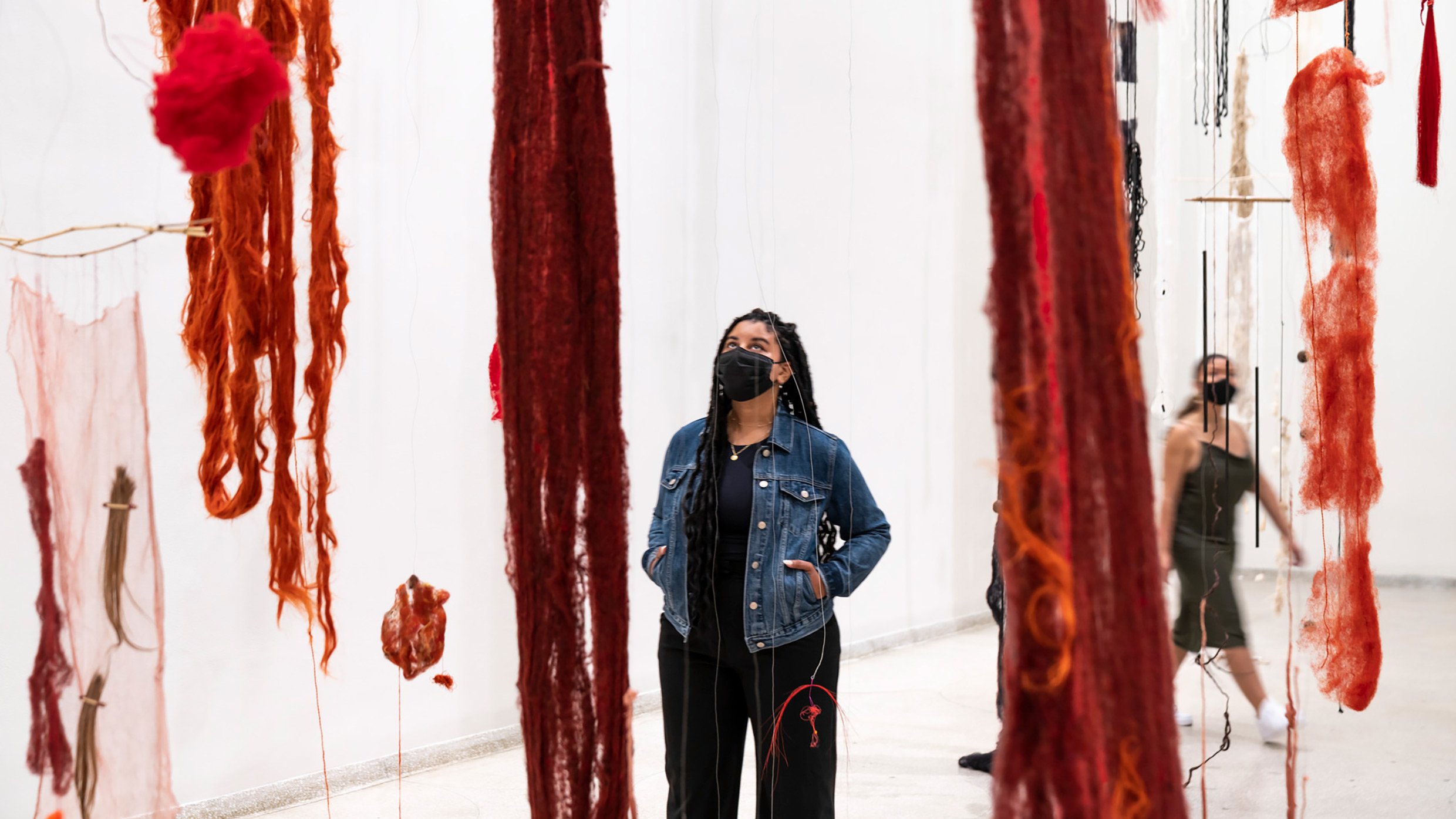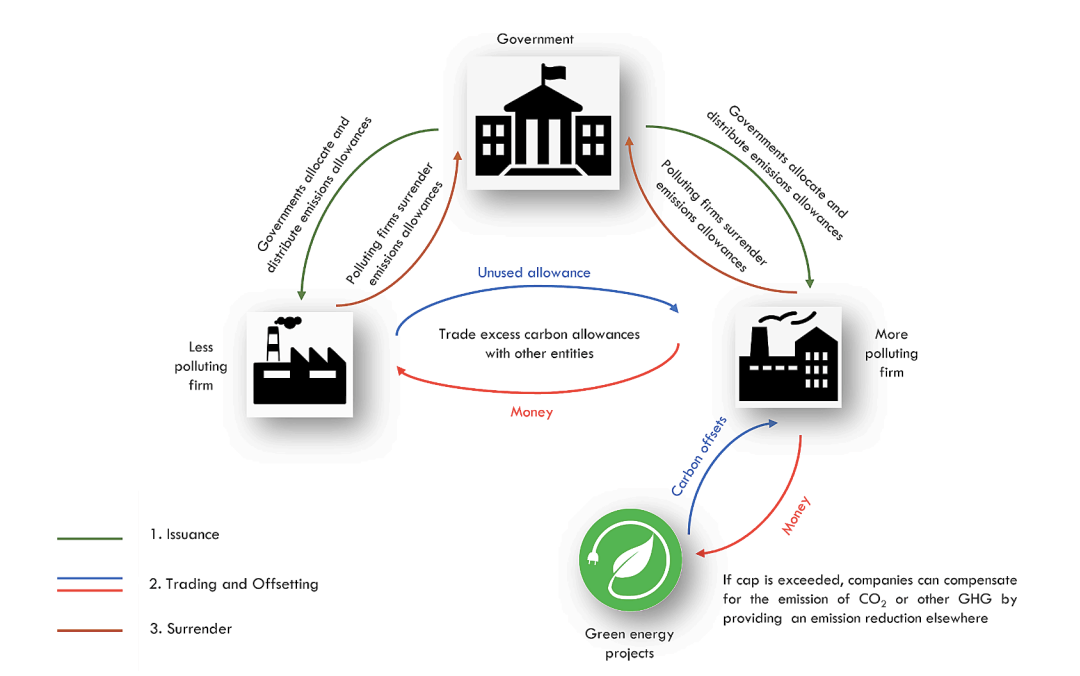introduction
Arts and cultural organizations are becoming increasingly aware of their climate impact, and many are taking action to reduce harm. Tracking, reporting, and offsetting emissions may seem like an overwhelming feat for small or mid-sized organizations, but emerging blockchain technology may help make the process more efficient and reliable.
There has been significant buzz around blockchain in recent years, and with it, much scrutiny about the associated energy consumption and environmental impact. Before using blockchain for sustainability initiatives, it’s important to consider the type of consensus mechanism used to verify transactions on the blockchain. Some, such as Proof of Work, require a great deal of energy as thousands of systems race to solve complex algorithms. More climate-friendly alternatives have been established, most notably, Proof of Stake. By selecting users to validate data sets based on the number of staked tokens they possess, Proof of Stake has reduced energy consumption by approximately 99.9% relative to Proof of Work. As many leading blockchain platforms, such as Ethereum, have switched to Proof of Stake, the environmental threat has been significantly reduced.
With that – ideas on how to use the technology for climate positive action have emerged, which may have implications for artists and arts organizations. Decentralized autonomous organizations (DAOs), managed on the blockchain, support climate projects through the donation of digital artworks. Additionally, distributed public emissions ledgers can create a verifiable transparent reporting system for benchmarking impact, and carbon credits can be bought and sold as NFTs.
The Guggenheim Museum tracked the climate impact of Cecilia Vicuña: Spin Spin Triangulene, an exhibition showcasing the work of the contemporary Chilean poet, activist, and filmmaker. Knowing that business travel, artwork shipment, and materials would have a significant climate impact, the Guggenheim decided to offset all emissions from the project through Art to Acres, a third-party organization that verifies and mediates the sale of carbon credits with arts organizations. However, this consumes a great deal of human capital, calculating and comparing emissions data from both the purchaser and seller.
In the Guggenheim’s concluding report, they stated that “The Green Team is hard at work on the next steps, understanding the takeaways from this carbon study, determining how best to enhance the tracking process, and determining best practices for reporting and sharing.”
This represents a need in the industry for simple, accurate tracking of emissions and sustainability strategy within arts and culture - and blockchain technology could be a part of the solution.
Cecilia Vicuña: Spin Spin Triangulene, Solomon R. Guggenheim Museum, May 27, 2022–September 5, 2022. Photo: David Heald © Solomon R. Guggenheim Foundation, 2022.
Donating Digital Art to a Climate DAO
Artists and arts organizations are uniquely able to use their work to support emission reduction and sequestration projects on the blockchain. Decentralized autonomous organizations (or DAOs) leverage smart contracts to manage decision making across stakeholders without a central authority. Many climate-focused philanthropic DAOs are cropping up in support of new projects to limit emissions or sequester carbon and other harmful gasses. Some have artists central to their mission. For example, Draw DAO relies on digital artists donating NFTs, which are offered to incentivize donating to the organization. Funding received then goes to a carbon sequestration project decided by the organization.
Selection of NFTs donated by artists, raising funds for carbon sequestration projects. Source: DrawDAO
Blockchain as a Distributed Public Emissions Ledger
As artists and arts organizations seek to better measure their own climate impact, blockchain may create transparency and accountability by serving as an immutable distributed public ledger for tracking and reporting emissions and energy use. Currently, emissions data is largely self-reported. When mandated by a government entity, reporting is typically regulated to some degree. Overall, this can lead to inaccurate or misleading data, lack of transparency, and inconsistency. Moreover, emissions data can be extremely complex – making it difficult to manually track in quickly or precisely.
In the United States, emissions tracking for arts organizations is generally optional. Therefore, there is little incentive for organizations to take this on, when the costs and required staff time may be high. Additionally, there is little uniformity in how information is collected or shared, making it challenging to benchmark emissions data across organizations.
One of the biggest sources of emissions within arts organizations is energy use within facilities – including exhibition or stage lighting, audio equipment, or climate control. Energy is fairly standard and measurable on the user’s end, but the sources are not. From coal burning to renewable energy sources, like wind or solar, each kWh of energy may be associated with a different level of environmental impact. As such, it’s a critical place to start in considering end -to-end emissions tracking.
A distributed ledger is a decentralized database, maintained by many users and verified by some kind of consensus mechanism (such as Proof of Stake). Research has focused on using NFTs for this purpose, rather than fungible tokens, because each token holds unique information and must be verifiable in origin.
Because blockchain is decentralized, this takes the decision making authority and ownership of data away from one party. Additionally, a blockchain can store large amounts of data which cannot be altered by any individual.
A blockchain ledger for carbon tracking is transparent, meaning any “node” can access all information on the chain, but it can also keep data secure and anonymous through cryptography. Considering the depth of information that would be available on an emissions ledger, it would be challenging for an organization to remain entirely anonymous. If an organization’s emissions data may reveal ‘trade secrets’ or pose a security risk, additional research is building about the use of shielded, fractional NFTs to transfer relevant information from end-to-end, without making it publicly available to all users on the blockchain.
Further, a blockchain ledger can implement smart contracts integrated with the internet of things, automating the input of real-time information from emissions sensors. This makes information quickly accessible to evaluate sustainability strategy.
Source: Zhou, Chenyu et al. “Harnessing Web3 on Carbon Offset Market for Sustainability: Framework and A Case.” IEE Wireless Communications. October 2023.
Many arts organizations are already taking steps to calculate and report their emissions and climate impact. While industry specific tools exist to calculate and report emissions, the process is often manual, dependent on self-reported information, and relatively imprecise. Implementing a distributed ledger may better allow benchmarking across organizations with standardized and verified data. Additionally, this may build trust among funders or other stakeholders. Through smart contracting, parts of the reporting process would become automated, removing the barrier of staff time and improving access to real-time data. allowing the organization to pivot toward more sustainable practices quickly.
Carbon Credits as NFTs
Once an organization has a better understanding of their overall climate impact, they may choose to purchase carbon credits to offset all or part of their emissions. Typically, offsetting is recommended to supplement sustainable operational enhancements, not replace them.
Under current regulatory policies, nearly all arts organizations in the United States would be operating in the voluntary carbon credit market, rather than the compliance market. Carbon credits in a compliance market are mandated for heavy emitters, wherein credits represent a capped level of emissions for each company. If a company doesn’t use all of their allotted credits, they may sell them to companies which have exceeded their allotted credits. This creates financial incentive to develop low-emission business practices. Buying and selling carbon credits in a compliance market is imperfect, but typically regulated by the government entity that created the mandate.
Source: Sadawi, Alia Al et al. “A comprehensive hierarchical blockchain system for carbon emission trading utilizing blockchain of things and smart contract.” Technological Forecasting and SocialChange. December 2021.
With no centralized market for the exchange of voluntary carbon credits, credits can be sold directly from a developer to an organization, and they are not standardized or well regulated. There is not a centralized market for exchanging voluntary carbon credits, and therefore, there is more room for corruption, double-counting, and misrepresentation of impact.
In the voluntary market, however, offsetting is by choice, often as part of a personal or organizational carbon neutrality policy. Voluntary carbon credits are project-based, typically falling under one of two designations: avoidance or removal. Avoidance projects seek to reduce emissions that would otherwise occur, whereas removal projects focus on sequestering carbon from the atmosphere. Sequestration could be through natural sources, like protecting an old growth forest and geological formations, or modern technical solutions. The underlying assumption for both avoidance and removal projects is that all projects are “additional” or would not have otherwise occurred.
Additionally, not all carbon credits have the same value. Generally, carbon removal, or sequestration, credits are thought to be more impactful, and therefore, sell at a higher rate. Other factors may include the year a project was completed, the location, what level of certification it received, or if there are any co-benefits that support further Sustainable Development Goals, like preservation of biodiversity.
The market is incredibly complex and lacks critical transparency. To address some of these limitations, carbon credits markets have emerged in the NFT space. Nori is a decentralized voluntary carbon offset program which sells “NRTs” – “Nori Carbon Removal Tons” or essentially, carbon credit certificates as NFTs. The tamper-proof credits support transparency and end-to-end tracking.
Many arts organizations are already working to offset their emissions, either on a project basis or organization-wide. Alternatively, if an organization is considering major facilities upgrades to lower emissions, they may investigate selling carbon credits to secure funding for the project.
Conclusion
For many arts organizations, time and knowledge are significant barriers to take action toward sustainability goals. While blockchain technology expands in the climate space, it may help fill the gap to support a new wave of action, centered around transparency, automation, and verified results.
-
“About Us” DrawDAO. Accessed December 13, 2023. https://drawdao.org/
“Carbon Calculator.” Gallery Climate Coalition. Accessed December 13, 2023. https://galleryclimatecoalition.org/carbon-calculator/
“Cecilia Vicuña: Spin Spin Triangulene Exhibition Carbon Emissions Calculation” Solomon R. Guggenheim Museum. 2024. https://www.guggenheim.org/wp-content/uploads/2023/04/guggenheim-exhibition-carbon-study-cecilia-vicuna-spin-spin-triangulene-04.11.2023.pdf
“Creative Climate Tools.” Julie’s Bicycle. Accessed December 13, 2023. Creative Climate Tools
Elizabeth Howcroft and Hannah Lang. “Explainer: Ethereum’s energy-saving Merge upgrade” September 15, 2022. https://www.reuters.com/technology/ethereums-energy-saving-merge-upgrade-2022-09-15/
Frankenfield, Jake. “What Does Proof-of-Stake (PoS) Mean in Crypto?” October 31, 2023. https://www.investopedia.com/terms/p/proof-stake-pos.asp
“Impact” Art to Acres Conservation for biodiversity and species evolution. Accessed December 2, 2023. https://www.arttoacres.org
Markus Lucking et al. “The Merits of a Decentralized Pollution-Monitoring System Based on Distributed Ledger Technology.” IEEE Access. September 2020. https://www.researchgate.net/publication/344226804_The_Merits_of_a_Decentralized_Pollution-Monitoring_System_Based_on_Distributed_Ledger_Technology
O’Connor, Lydia. “The Exhibition That Launched a Greener Guggenheim.” June 4, 2021.Guggenheim.https://www.guggenheim.org/articles/checklist/the-exhibition-that-launched-a-greener-guggenheim
Sadawi, Alia Al et al. “A comprehensive hierarchical blockchain system for carbon emission trading utilizing blockchain of things and smart contract.” Technological Forecasting and SocialChange. December 2021. https://www.sciencedirect.com/science/article/pii/S0040162521005576?casa_token=xAqkwzas2loAAAAA:he3Obdk1pkTPgHbwP61blFH322SGjFEs2jEUTxHtkdbYanWTVygCQdCT6BbFGVvdYVpvLDTZd3Y
“What are the Sustainable Development Goals?” United Nations Development Program. Accessed December 13, 2023. https://www.undp.org/sustainable-development-goals
“What is a Distributed Ledger?” Nasdaq. August 26, 2022. https://www.nasdaq.com/articles/what-is-a-distributed-ledger
“What is Emissions Trading” United States Environmental Protection Agency. Accessed. December 13, 2023. https://www.epa.gov/emissions-trading-resources/what-emissions-trading
“What is the Voluntary Carbon Market?” CarbonCredits.com. Accessed December 13, 2023. https://carboncredits.com/what-is-the-voluntary-carbon-market/
Zhou, Chenyu et al. “Harnessing Web3 on Carbon Offset Market for Sustainability: Framework and A Case.” IEE Wireless Communications. October 2023. https://cmu.idm.oclc.org/login?url=https://ieeexplore.ieee.org/stamp/stamp.jsp?tp=&arnumber=10325364





